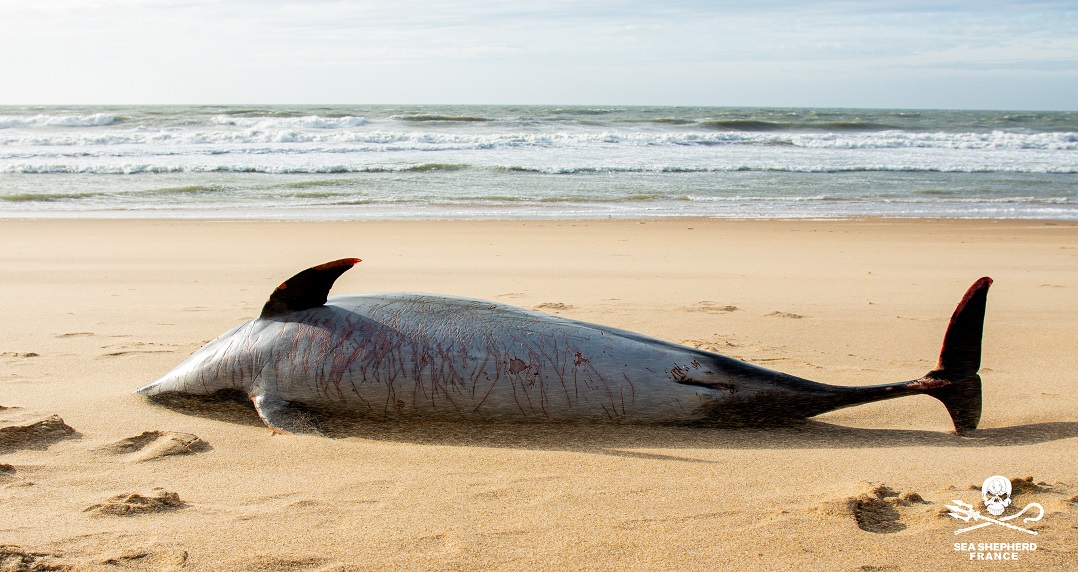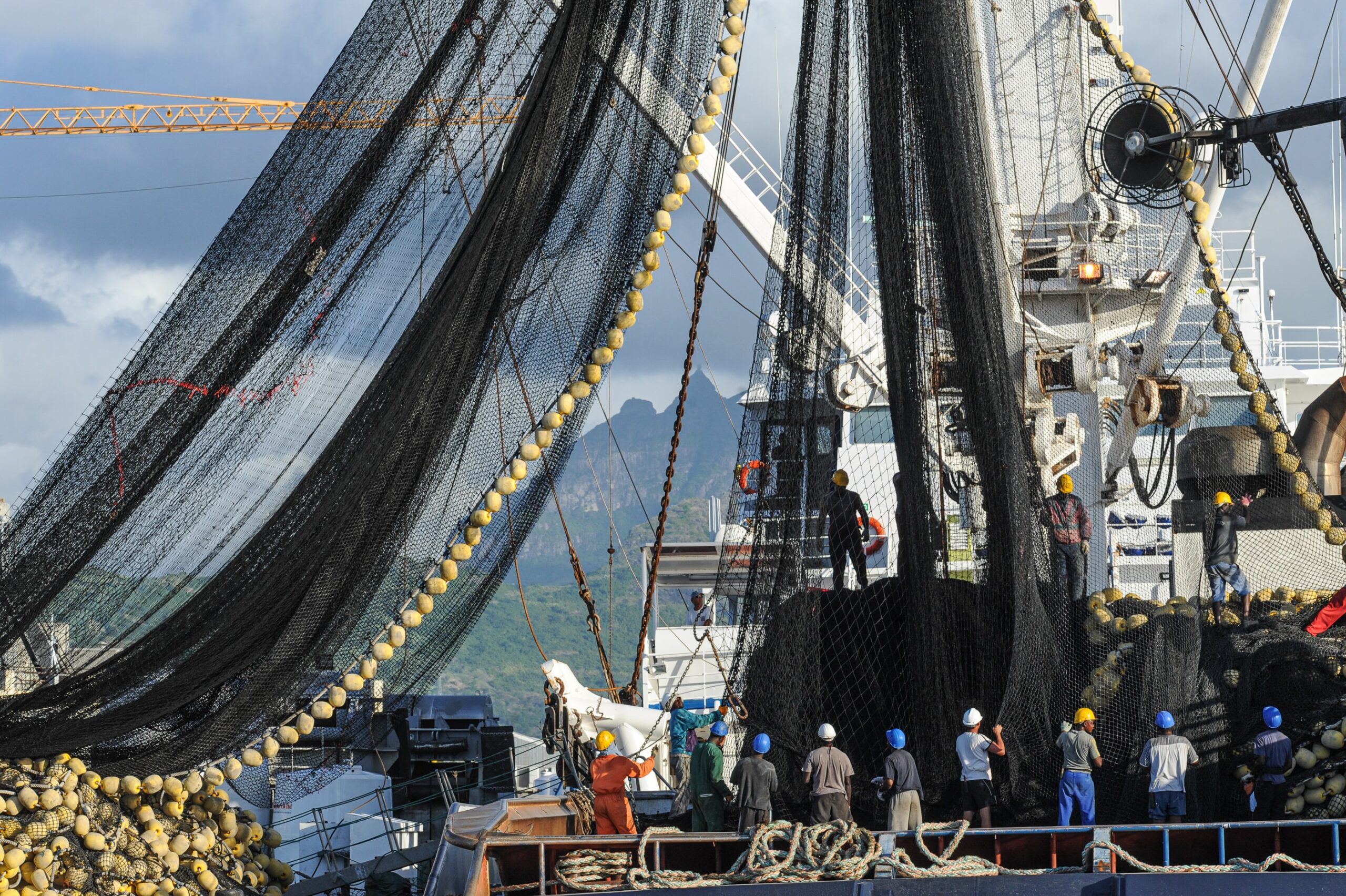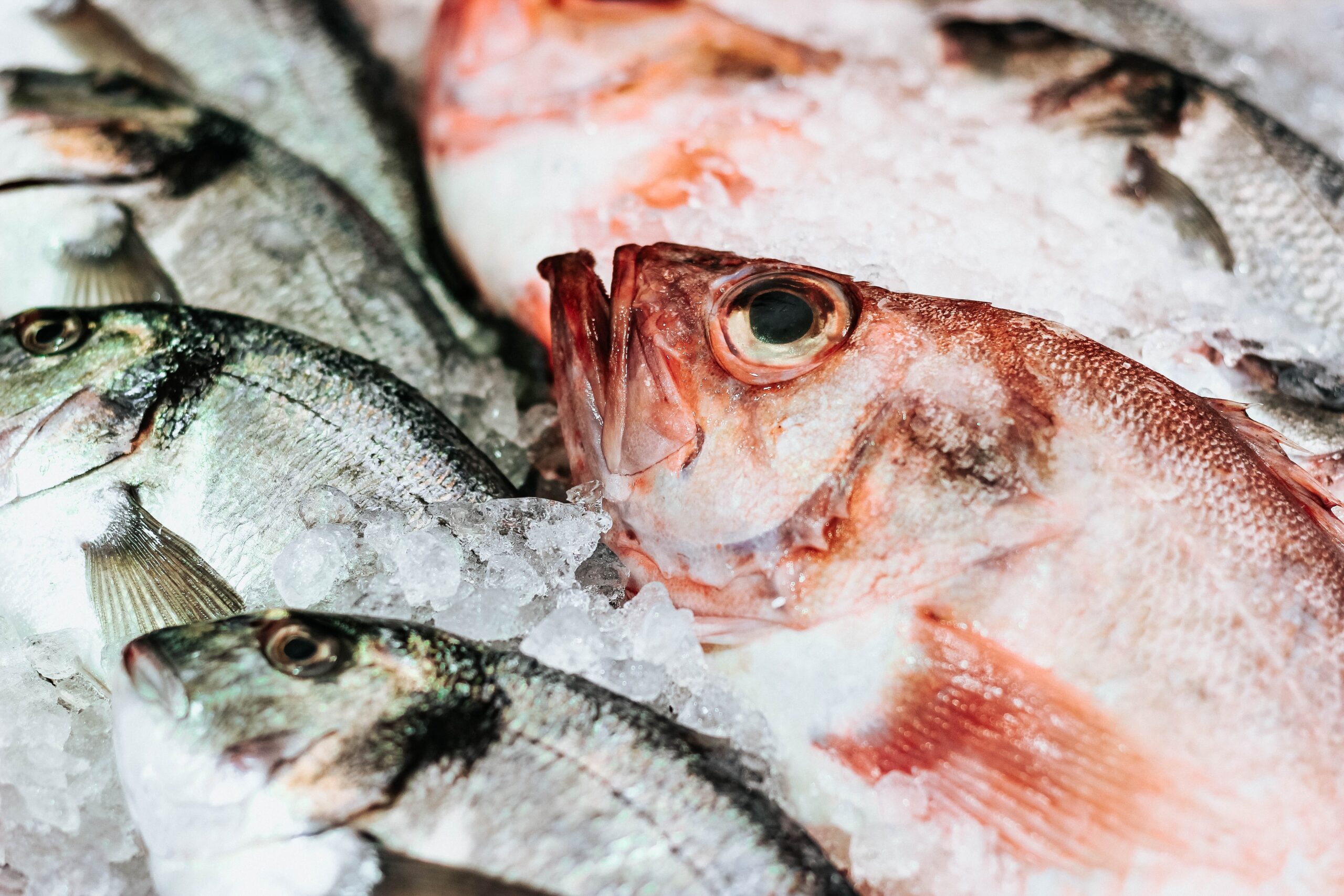Top French court orders closure of fisheries amid mass dolphin deaths
READER ADVISORY: This story contains images of dead wildlife that some viewers may find disturbing.
Monday, March 20. That’s a date French marine conservation groups will remember. Fishers, too.
France’s top administrative court, the Council of State, gave the government six months to close areas to fisheries during portions of the year to curtail dolphin deaths on the French Atlantic coast. But conservationists say there’s still a long way to go.
An image search of “dolphins” and “France” won’t just yield the typical photos of these marine mammals moving in the ocean, sunbeams dancing on their smooth skin. Instead, many of the pictures will show bloodied animals lying dead on the beach.
Earlier this year, France’s Stranding Network, or RNE, revealed that nearly 400 of the small cetaceans had washed up dead along the country’s west coast between Dec. 1, 2022, and Feb. 15, 2023. The Pelagis Observatory, which coordinates the RNE, reported that 90% of these were common dolphins (Delphinus delphis), with most bearing traces of injuries from fishing gear.
However, the true number of deaths is likely far higher. Pelagis estimates that up to 10,000 dolphins may die every year off France’s west coast, as more than 80% of them sink or decompose at sea. The death toll is much higher than the more notorious dolphin massacres on the Danish Faroe Islands and Japan’s Taiji Cove combined.
Dolphins face a number of human-caused perils at sea, including oil spills, boat strikes, exposure to toxic chemicals, and the impacts of rapidly worsening climate change.
But in France, conservationists and animal rights groups are most alarmed by bycatch: fishers incidentally killing species they don’t want or aren’t allowed to keep, such as dolphins. Once trapped in nets, the mammals often die of asphyxiation or injuries caused by fishing gear.
“We are talking about thousands of square kilometers of fishing nets laid each day in the Bay of Biscay,” Lamya Essemlali, president of Sea Shepherd France, told Mongabay in a call. “We end up with dolphins and fishing boats in the same areas because they are looking for the same things.”
This year, the surge in deaths on the French Atlantic coast hit earlier than usual, according to Pelagis, which recorded 174 strandings in January alone, against 67 the same month a year earlier.
Ilaria Di Silvestre, head of EU policy and campaigns at the International Fund for Animal Welfare (IFAW), blames poor enforcement of existing bycatch rules as outlined by the European Commission.
“If the level of strandings continues, it will eventually have an impact on the species’ survival,” she wrote in an email to Mongabay.
 A dead dolphin on the beach bearing traces of entanglement in fishing gear. Image courtesy of Sea Shepherd France.
A dead dolphin on the beach bearing traces of entanglement in fishing gear. Image courtesy of Sea Shepherd France. A dolphin found on the beach, possibly intentionally mutilated by fishers after being caught. Image courtesy of Sea Shepherd France.
A dolphin found on the beach, possibly intentionally mutilated by fishers after being caught. Image courtesy of Sea Shepherd France.A midwinter night’s dream
Activist organizations have been putting pressure on France for years.
In 2019, a group of NGOs — Sea Shepherd France, France Nature Environment (FNE), and Defense of Aquatic Environments (DMA) — filed a complaint against the French government to take measures to protect common dolphins. The EC further urged France last year to avert the bycatch of dolphins and other protected species after the nation failed to respond to a formal notice from 2020.
On March 20, the French Council of State ruled in favor of the three marine conservation associations and ordered the government to implement an area- and time-based closure of certain fisheries within six months.
In a joint statement, the NGOs called the council’s ruling a “historic victory.”
“This macabre episode must be the last,” they added, referring to the high mortalities of the past few months.
The mortalities are highest in the winter, according to Di Silvestre, because the season brings large trawlers targeting the spawning grounds of the European sea bass (Dicentrarchus labrax) close to dolphins. But still, Sea Shepherd France says it anticipates further deaths this summer as the Council of State didn’t provide further details on the closures that the French government needs to implement.
“We are counting on the most ambitious scenario, that is to say closures for three months in the winter and one month in the summer,” Essemlali said.
Yann Libessart, a spokesperson for the French Bird Protection League (LPO), said in an email to Mongabay that this decision “would allow the government to hide behind a court decision so that it would not incur the wrath of the fishing lobbies.”
At the International Agricultural Show in Paris this year, President Emmanuel Macron acknowledged that the scenes of dead dolphins on the beach were “difficult” to look at. “They are shocking,” he told investigative media outlet Vakita.
A spokesperson for the EC, who declined to be named citing commission policy, told Mongabay in an email that some species like corals or sea pens, which take years to recover from damage caused by fishing gear, would need to be protected by long-term or permanent closures.
By the end of 2023, the spokesperson said, the EC expects member states to have developed “threshold values for the maximum allowable mortality rate from incidental catches” of certain species of birds, mammals, reptiles and non-commercially exploited fish and cephalopods.
Under the European Union’s Marine Strategy Framework Directive (MSFD), nations must establish these measures through regional or subregional cooperation.
“So far, regional thresholds have not been agreed and in many cases, no corresponding national limitations are in place,” the EC spokesperson added.
 Men working on an industrial trawler in Mauritius. Image by Jo-Anne McArthur via Unsplash.
Men working on an industrial trawler in Mauritius. Image by Jo-Anne McArthur via Unsplash.French roulette: Who kills who?
But the Council of State’s decision and the EC’s latest objectives are not good news to everyone.
“What’s happening with our sector has become unbearable,” France’s National Committee for Maritime Fisheries and Marine Farming (CNPMEM) wrote in recent a letter to Macron.
Olivier Le Nézet, president of the CNPMEM, said in a press release that the top court’s decision was “incomprehensible.”
He added, “it is all the more violent that the action plan proposed by the state was to make it possible to find alternatives to reconcile the protection of dolphins and the pursuit of fishing activities.”
Contacted by Mongabay, the CNPMEM declined to comment.
The court’s decision comes at a particularly tense moment for European fishers. In February, the EC released a plan to ban mobile bottom fishing — such as trawling and dredging, widely regarded as among the most destructive fishing practices — from all of Europe’s marine protected areas (MPAs) by 2030 at the latest. This would cover around 30% of the continent’s seas.
The CNPMEM said this would lead to the disappearance of a third of the French fishing fleet by 2030.
“We do not play Russian roulette with the future of a sector,” Le Nézet said in the statement.
France’s state secretary for the sea, Hervé Berville, backed the CNPMEM’s opinion in the Senate in March, saying that the government was opposed to a ban on the use of bottom gear in MPAs. In his view, he said, the EC is ignoring efforts by fishers to recover stocks, while sanctioning nations that have created MPAs.
“It’s a bonus for bad students,” Berville said, adding it was “madness” for food sovereignty in France, which already imports 80% of its fisheries products.
“Setting aside some areas from fishing may cause difficulties in the short term but will build productivity for the future,” the EC spokesperson said in the email, adding that while there are risks for the fishing industry, there are also opportunities. “Restoring marine ecosystems will make them richer in species and more diverse, which will make them more robust to pressures from climate change, eutrophication and other pressures that could seriously disrupt fishing.”
But in early April, the EU commissioner for the environment, oceans and fisheries Virginijus Sinkevičius told Berville that he would not impose a ban on mobile bottom fishing in member states’ MPAs, neither in 2024 nor in 2030.
“The problem is not so much that the European plan’s goals are insufficient, but that they are not constraining,” Libessart said.
The French marine protection association BLOOM just started legal proceedings against Berville, accusing him of “irresponsible words” in the press and in public institutions.
 A pile of dead fish in ice. Image by Micheile Henderson via Unsplash.
A pile of dead fish in ice. Image by Micheile Henderson via Unsplash.‘Devouring the ocean’
Meanwhile, environmental organizations have not let up their pressure on the French government’s support of the fishing industry.
Essemlali said most fishers were not declaring incidental catches, making it even harder to assess their real impact on the dolphin population. “They must make a declaration with the place of capture, the day of capture, the name of the boat and so on.”
And even when dolphins survive capture, fishers don’t always release them back into the water, she added. “Some fishers actually rip them open and gut them in an attempt to sink them, so that the corpses don’t end up on the beach,” she said. “That’s one way to make the evidence disappear.”
But in his interview with Vakita, President Macron said he didn’t wish to stigmatize fishers “who already live in very harsh conditions,” adding that “we cannot abandon [them].”
In 2013, weekly news magazine L’Obs published a report from the general accounting office, seemingly kept confidential for several years, that showed that total subsidies to the fishing industry in 2008 amounted to more than 1 billion euros ($1.47 billion at the time), which was almost equal to its revenues.
“We might as well use the money to compensate the fishers who will stay in dock and give this population of dolphins a chance to survive,” Essemlali said.
But ultimately, she said, the root cause of the problem is humanity’ overconsumption of fish.
“We are sacrificing the dolphins to the fishing sector,” she said, adding that we don’t just need to fish better, but also fish less.
According to the United Nation’s Food and Agriculture Organization, global average consumption of fish and other seafood was 9.9 kilograms (21.8 pounds) per person per year in the 1960s, rising to 20.5 kg (45.2 lbs) in 2019. That same year, France’s estimated per capita consumption was 34.24 kg (75.5 lbs).
“We are devouring the ocean alive,” Essemlali said.
Banner image: A pod of dolphins swimming off South Africa. Image by redcharlie via Unsplash.
 Article published by Maria Salazar
Article published by Maria Salazar
Animals, Conservation, Dolphins, Fisheries, Fishing, Interns, Marine Animals, Marine Biodiversity, Mongabay fellows and interns, Oceans, Wildlife, Wildlife Conservation
PrintBy accepting you will be accessing a service provided by a third-party external to https://oc3anclub.com/

